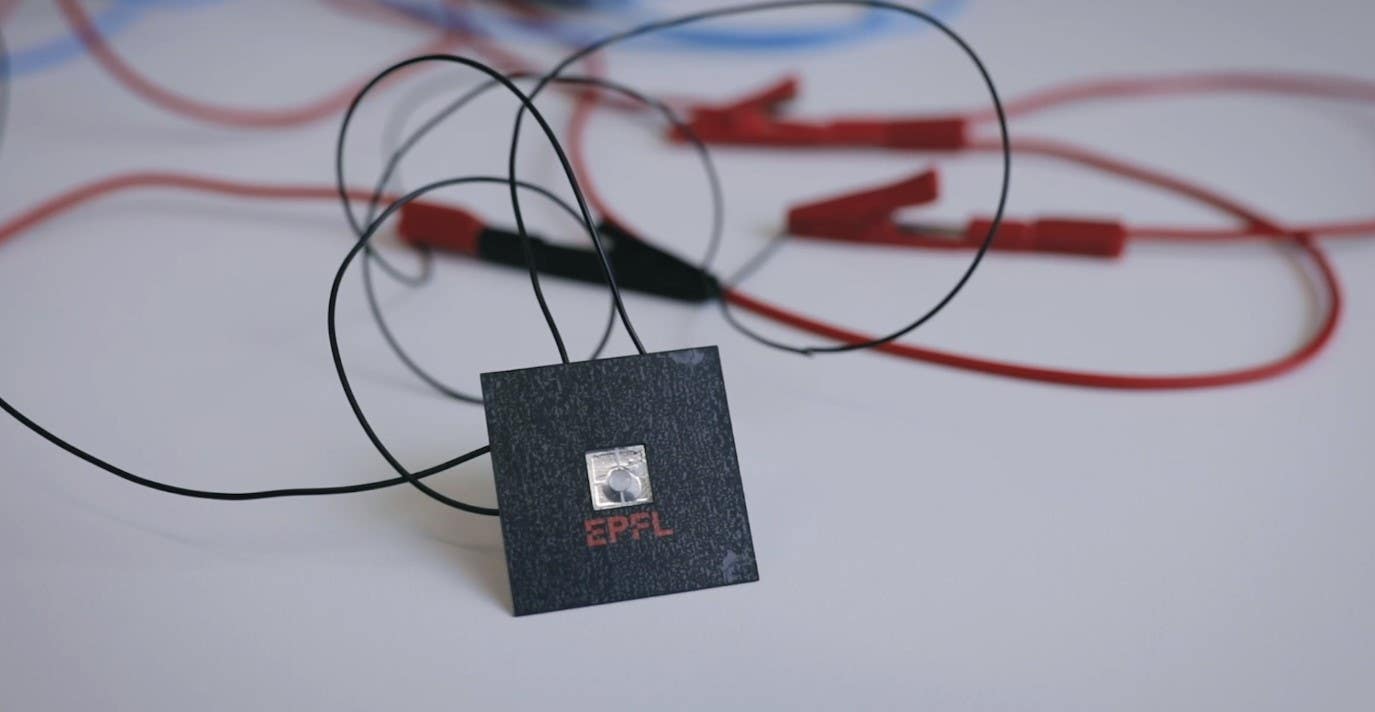Wearable haptics simulate sense of touch in virtual reality
[July 24, 2020: Ecole Polytechnique Federale de Lausanne] In the virtual world, the objects you pick up do not exist: you can see that…

[July 24, 2020: Ecole Polytechnique Federale de Lausanne]
In the virtual world, the objects you pick up do not exist: you can see that cup or pen, but it does not feel like you’re touching them. That presented a challenge to EPFL professor Herbert Shea. Drawing on his extensive experience with silicone-based muscles and motors, Shea wanted to find a way to make virtual objects feel real.
Inflating capsules
“With my team, we’ve created very small, thin and fast actuators,” explains Shea, who heads up the School of Engineering’s Soft Transducers Laboratory at EPFL Neuchâtel. “They are millimeter-sized capsules that use electrostatic energy to inflate and deflate.” The capsules have an outer insulating membrane made of silicone enclosing an inner pocket filled with oil. Each bubble is surrounded by four electrodes, that can close like a zipper. When a voltage is applied, the electrodes are pulled together, causing the center of the capsule to swell like a blister.
Recreating the sense of touch
It is an ingenious system because the capsules, known as HAXELs, can move not only up and down, but also side to side and around in a circle. “When they are placed under your fingers, it feels as though you are touching a range of different objects,” says Shea. The research has been published in the scientific journal Advanced Material.
Video games and surgery
Shea’s team is already working on integrating a dozen of these capsules into a thin glove. “The capsules will be combined with another system that actively blocks your fingers from going through the virtual object,” says Shea. “You’ll convincingly feel you’re holding a solid object even though your hands are empty. We’ll also be able to recreate the feeling of different materials: you’ll be able to tell whether the object you’re holding is made of wood, plastic or ceramic. This will be fun for video games but also useful for surgical simulators and teleoperation.” Shea will also use tactile illusions to make the feeling as real as possible. “We are dominated by what we see,” he says. “When we rely heavily on our vision – which is the case in virtual reality – it is easy to trick our brain about the object we’re touching. That helps make virtual objects feel real.”
For the technology to be used, the researchers now need to create the software that will program the feeling and weight of the virtual objects held in the glove. “Simple movements will be easier to configure than those requiring more accuracy,” says Shea.
Joseph Shavit
Head Science News Writer | Communicating Innovation & Discovery
Based in Los Angeles, Joseph Shavit is an accomplished science journalist, head science news writer and co-founder at The Brighter Side of News, where he translates cutting-edge discoveries into compelling stories for a broad audience. With a strong background spanning science, business, product management, media leadership, and entrepreneurship, Joseph brings a unique perspective to science communication. His expertise allows him to uncover the intersection of technological advancements and market potential, shedding light on how groundbreaking research evolves into transformative products and industries.



